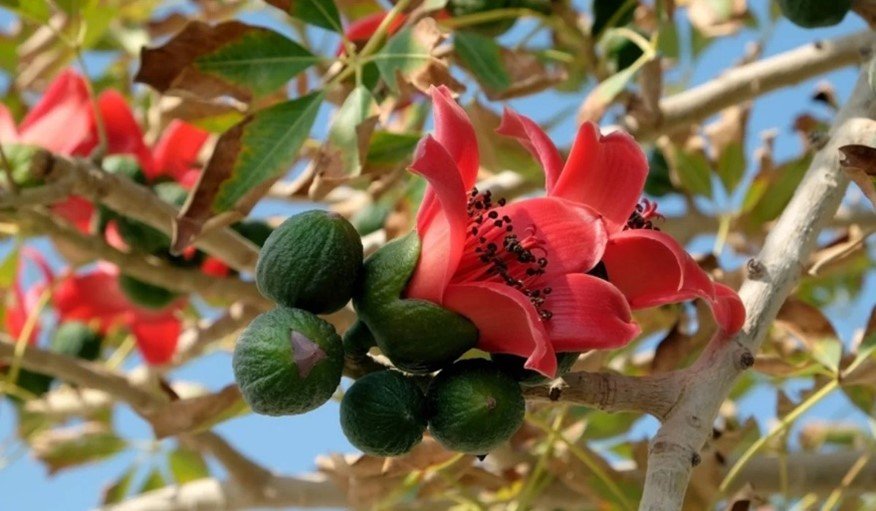Prelims 21-05-2024
Baobab Forests of Madagascar
Why in news?
- Recently, there was news that Madagascar’s baobab forests are being restored with the help of Artificial Intelligence (AI) using satellite footage, algorithms and remote sensings.
About the Madagascar Baobab (Adansonia Madagascariensis)
- Madagascar Baobab is a small to large tree species (six of the world’s eight baobab species are indigenous to Madagascar)known for their giant trunks and long lifespan.
- It occurs in Mahajanga and Antsiranana provinces of Madagascar, an island nation off the southeast coast of Africa.
- It grows in dense dry deciduous forestson limestone, sandstone and gneiss and in sub or coastal moist forests on sandy or chalky soil.
- It can live for over a thousand years, and has historically grown in vast forests across the island.
- IUCNRed List of Threatened Species: Least Concern

Threats
- Every year, 4,000 hectares of baobab forest in Madagascar are destroyed due to slash-and-burn agriculture.
- Slash and burn practice involves clearing land with fire to plant crops, driven by the extreme poverty of some communities.
- Baobab Forests are also facing the loss of large-bodied animalssuch as giant lemurs or giant tortoises, which became extinct about 500 years ago, that played a crucial role in spreading the seeds of baobab trees in their dung.
- Climate change has exacerbated the situation by increasing dryness and irregular weather patterns negatively affecting the growth and survival of baobab trees.
Xenotransplantation
Why in news?
- The first recipient of a modified pig kidney transplant passed away.
About Xenotransplantation
- Xenotransplantation is defined as any procedure that involves the transplantation, implantation, or infusion into a human recipient of live cells, tissues, or organs from a nonhuman animal source.
- The development of xenotransplantation is driven by the fact that the demand for human organs for clinical transplantation far exceeds the supply.
- Xenotransplantation involving the heart was first tried in humans in the 1980s.
- In January 2022, the first xenotransplantation of a genetically-modified pig heart was done.
- Benefits : Transplantation of cells and tissues may be therapeutic for certain diseases such as neurodegenerative disorders and diabetes, where human materials are not usually available.
- Concerns : The use of xenotransplantation raises concerns regarding the potential infection of recipients .

Why are pigs often used for xenotransplantation?
- Pig heart valves have been used for replacing damaged valves in humans for over 50 years now.
- The pig’s anatomical and physiological parameters are similar to that of humans, and the breeding of pigs in farms is widespread and cost-effective.
- Also, many varieties of pig breeds are farmed, which provides an opportunity for the size of the harvested organs to be matched with the specific needs of the human recipient.
Semal Trees
Why in news?
- Semal trees are disappearing from south Rajasthan.
About Semal Trees (Bombax ceiba L.)
- It is a silk cotton tree which is known locally as semal.
- It flowers spectacularly in spring.
- It is characterised by its spiked trunk and fluffy seed pods, and is native to India.
- Its roots, fruits, seeds, stem, stem bark, and gum are all medicinally valuable.
- Traditionally, the debarked stem or branch of a semal tree is used as the bonfire’s in Udaipur’s Holika Dahan.
- Utility: It has multiple purposes and is useful to wild animals, insects, and even to tribal communities
- Various parts of semal trees are used to treat gastrointestinal, skin, gynaecological and urogenital diseases.

